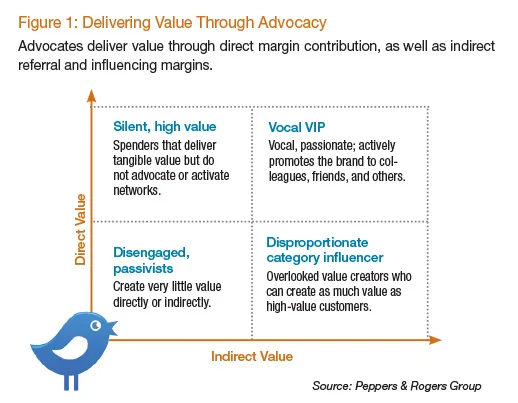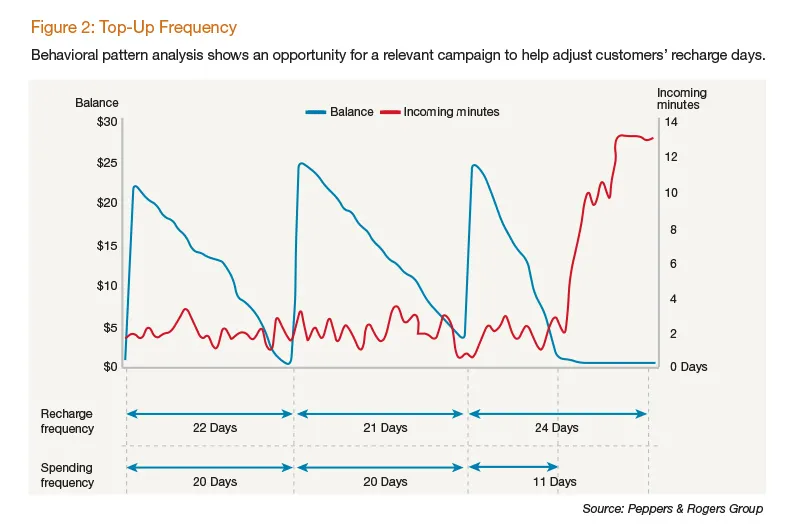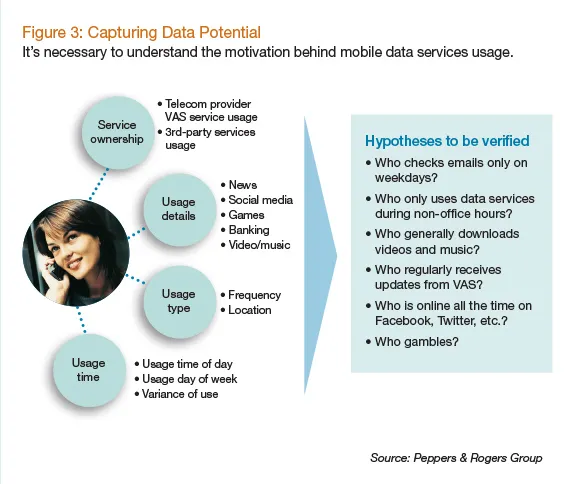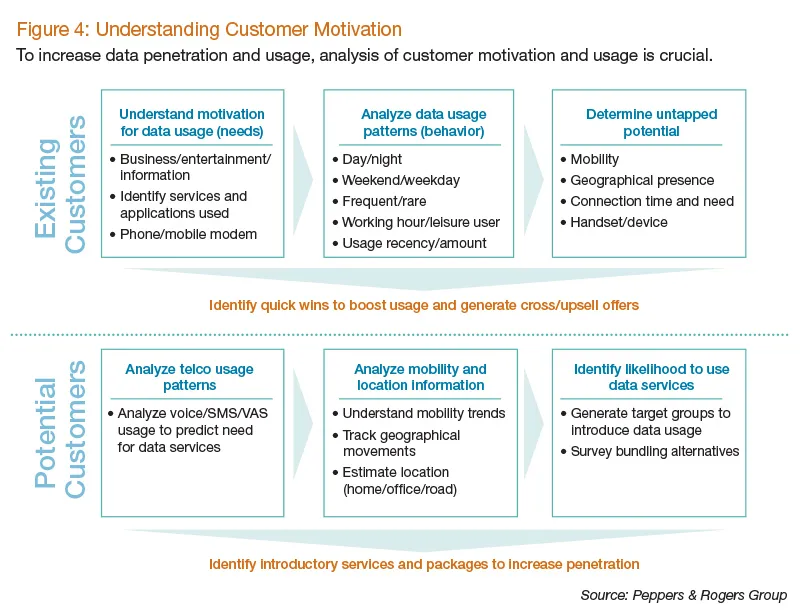How engaged are your customers? Can you identify advocates among your customer base? These are important questions to today's senior executives. Organizations in every industry are looking for competitive advantage and the relationship strength that comes from building and engaging with a community of strong customer advocates.
Customer advocacy is a step beyond satisfaction and loyalty, where customers feel like they have a stake in the success of the business. According to Peppers & Rogers Group, customer advocates can be identified by three hallmarks: First, they are engaged, supportive, and loyal to a brand even through difficult times. Second, they recommend and actively promote a brand to others. And third, they have an emotional attachment to a brand; they feel a sense of personal "ownership." Customer advocates deliver value both directly and indirectly with their purchases, use of service, word of mouth, and influence—both online and off. Companies across industries can benefit by identifying and building customer advocates within their base.
The pharmaceutical industry in particular stands to gain by focusing on customer engagement. Healthcare is a highly regulated industry. Government oversight by the Food and Drug Administration, state laws, and other mandates mean that companies have a narrow window when it comes to differentiation on price or in how they communicate with doctors, academics, and the public. In addition, the impact of the industry's products and services is greater than most others. In some cases they mean life or death. This puts increased pressure on getting the right products and services to the right people in the most efficient and effective way.

Despite all the medical breakthroughs and innovation within the pharma industry, it maintains a less-than-stellar reputation in the public's eye. Only 32 percent of respondents to Harris Interactive's 2011 Reputation Quotient agree that pharma has a positive reputation. The public is generally unaware of the role pharma plays in the advancement of healthcare, which is one reason for the industry's poor reputation. This creates a need for companies to work with their customer groups—such as patients, physicians, payors, healthcare professionals, caregivers, scientists, and the public—so they engage with and want to advocate for pharma's brands and contributions. This, however, can be tricky. Past secrecy among pharma firms that paid for supposed advocacy has led to more stringent policies. There are now mandated rules of engagement about who is an objective advocate. Companies need to tread carefully and work with those who actively want to engage with them.
The status quo of customer engagement is not enough, however. The traditional pharma customer engagement model for physicians, for example, focuses on two primary customer categories:
- Commercial customers are primarily practicing physicians. They are most engaged with current products, and many are experts with products already in the marketplace. Product utilization is essential to segmentation.
- Product-development customers focus on up-and-coming products, and are interested in R&D and product development. They tend to be leaders in academia, science, or clinical research. Clinical research productivity and thought leadership are integral to segmentation.
In some cases pharma customer advocates in these groups are identified and treated as such. Customers in the commercial category, for instance, may engage in speaker programs and educational efforts. In the product development category, customer advocates participate in R&D, offer scientific advice, and are often privy to data that others don't have access to.
Most often, however, customers in both categories are "mass engaged" through traditional marketing vehicles and product development programs. Many of these efforts are suboptimal, and leave much room for improvement in the customer relationship.
Pharma firms need to move away from mass engagement toward the more personal connections that are being enabled elsewhere in business.

Customers as friends
What if in the future there was a "close friends" customer engagement model that more deliberately and creatively values and includes a select subset of key customers for their contribution to product development and brand strength? These key customers become an extension of the product development team, advancing companies from the insular product development structure currently in place at many pharma companies. Ultimately, shorter product development time and improved drugs through better physician and patient feedback during the initial launch and testing period should be the aim of the new engagement model.
Product-development customers want to innovate and contribute to the greater good in medicine. Participating in the R&D process would be their loyalty driver and incentive to stay engaged. Compensation doesn't matter to these key customers. They have loyalty to the "cause," such as disease prevention or eradication.
Customers identified as customer advocates by the company stand to benefit from their advocacy. For instance, they will likely receive a differentiated customer experience and customer support. They are "in the loop" on (and even participate in) cutting-edge product development and the next wave of products with pre-beta testing and access to pharma company researchers and scientists. In addition, pharma firms may grant them privileged access to data.
For pharma companies, working with customer advocates taps new, valuable resources. The open-source, premarket collaboration model has been successful in industries including software development (think Mozilla's Firefox and the Linux operating system) and consumer packaged goods (e.g., Del Monte created new pet food products based on customer suggestions). Surely, there are additional elements of this intense customer-centric philosophy that we can apply to pharma, as well as to other industries, to further innovate. Companies can tap into the collective wisdom and expertise of their engaged and knowledgeable customers to help bring new products and services to market.

Continued active collaboration with engaged customers can help improve those products currently on the market, as well. Internal researchers may not realize how the customer experience with a drug impacts its success once it goes to the market-at-large. Customer feedback and participation in improvements can help strengthen the brand and customer satisfaction in the long term.
The simple act of inviting interested and valuable customers to participate in product development and ongoing advancement will help a company build trust-based relationships. If both parties work toward the same goal, they will be more likely to consider one another partners. This helps form the important emotional connection a customer advocate has with a brand.
Many of these engaged customers will share their experiences and feelings about a company with others. In this increasingly social age, it will be easy for them to influence others and spread the message on a brand's behalf. Instead of paying people or compelling them to extol the advantages of a company, as was done in the past, investing in the relationship will lead customers to make the decision on their own to help influence sales and brand reputation. The brand and message becomes more credible in the marketplace as a result. In some cases customers may be able to interact with and connect through social media platforms and communities (see sidebar, page 19). The platform provides information and is a foundation for the company to connect with the broader customer community through understanding and leveraging individual expertise, connectedness, and sphere of influence.
Mining for advocates
Not all satisfied customers are customer advocates. This is an important point for all companies focused on the individual customer experience, regardless of industry. It's necessary to take a data-focused approach to understand who among your customers is or is likely to become a customer advocate (see Figure 1). For instance, firms may not have data on the influence level of their customers. However, they may have insights on connectivity. How many friends do they have on Facebook, how many followers do they have on Twitter or the online medical community Sermo? Do they have their own blog? Which conferences, symposia, and other interaction events do they participate in? Are they active members of relevant, even grassroots, organizations? These questions can help determine the level of influence they may have.
Add to this the customer experience data that exists about their relationship with the company. Are they valuable customers? How much actual value do they have now, and how much potential value might they have? Do they actively engage with marketing and sales materials? Have they complained about products or services in the past? Have they provided testimonials or positive reviews? Are they willing to recommend the company to others?

Once a foundation of potential customer advocates is identified, companies can actively reach out to them with a customer advocate or ambassador program invitation. The program should be clearly defined ahead of time, with objectives, activities, deliverables, and metrics in place. This program cannot succeed without commitment from all levels of the organization. If it only lives within one department, it doesn't stand a chance.
In addition, companies can mine their database for similar customers who have potential to be customer advocates. They can create an action plan to move this group along the advocacy spectrum. However, true customer advocacy must be created organically. It's not something that can be faked or coerced.
Companies that can formalize their interactions with engaged customers and build a customer advocate community will gain a competitive advantage.
















